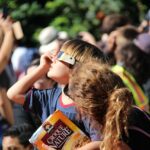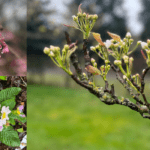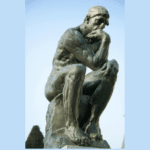There are many ways to learn about leadership, and sometimes we can gain new perspectives by looking to the arts for inspiration and new approaches to design.
Ramaa Bharadvaj is a dance /movement designer, essayist, allegorist, and dance faculty at Chinmaya Naada Bindu and she is remarkably articulate about the process of designing Indian classical dance. Not only that, but she explains how the process can be adapted by leaders interested in the process of design.
On the night of the performance where I first saw her dance at the World Leadership Dialogue Conference in Pune, India, Ramaa told the audience why she was wearing one of her older costumes – a bit worn. She explained that was honoring the craftsman who had sewn it for her, a tailor who had just lost everything in the Chennai floods.
And thus we saw an artist who understands the deep commitment that an artist/master craftsperson makes through her or his art.
Needless to say, the audience was moved and stayed inspired throughout her deeply affecting performance.
Here’s the entire interview:
You can also find it on the podcast on Itunes, episode 46
And I really appreciate if you can leave a rating and review!
About My Guest
Ramaa Bharadvaj is a storyteller – sometimes with movements and sometimes with words. An acclaimed dance /movement designer, essayist, allegorist and performer, Ramaa studied Bharatanatyam under legendary gurus of India.
For 31 years Ramaa lived in the United States of America, where, she was the first Indian dancer to win multiple Lester Horton Dance Awards for her choreographies and performances, which have been nationally telecast by PBS. She was also the first Indian dancer in over 45 years to be featured on the cover of the prestigious Dance Magazine.
Her “Panchatantra- Animal Fables of India” (1994) received critical acclaim for its humor and originality and has been seen by over 15,000 children in the US. In 2007, under commission from the Skirball Cultural Center, she created “Tails from India”, a special choreography for the opening of the Center’s Noah’s Ark Children’s Gallery.
Ramaa was a visiting professor of dance at several Universities in the U.S. She was honored with the Directors Award from California Arts Council for her contributions to the Arts in the State of California. This annual award is given to those who embody the highest commitment to the arts in California. She was selected as one of 21 exceptional South Asian women living in the U.S., whose life-stories were presented in the book “Spices in the Melting Pot”.
Ramaa is also an acclaimed writer. Her dance commentaries have been published by leading publications in India, and in the United States.
She was one of 15 artists invited to write along with stalwarts like Pt Ravi Shankar, for an archival book on Indian arts released in Philadelphia.
Ramaa’s writings and conference presentations have been used as reference materials by research students.
In 2009, Ramaa returned to India. She now directs the dance program at Chinmaya Naada Bindu – a Gurukul-Ashram for classical Indian arts based in Kolwan near Pune. She travels, teaches, writes and speaks on the arts – with special emphasis on dance – for teachers, educationists and students.
The Kalasinchana Magazine of Bangalore, India profiles Ramaa’s life and thoughts in their life-sketch section: https://drive.google.com/
Quote from the interview:
“Dance is the most collaborative art form.”
“Learning starts from the outside and comes to the inside, giving starts from the inside and goes to the outside.”
“The question should be about how to serve.”
“In this short time you have as a dancer, you must have gratitude.”
“The purpose of theatre,art and dance is to educate the illiterate, enlighten the literate and to entertain the enlightened.”
From the Show
Business leaders can learn from dancers about how to use stories, adapt those stories, improvise, and provide service from the perspective of a client or audience.
As Ramaa begins the design process for each dance, she goes through five levels of design:
Physical
Prana/breath
Emotion
The intellect – the why of the piece and its story
Bliss
We discussed:
How dancers stay connected to the dance even as their bodies age and they can no longer perform at their physical top.
How dance originally was a vehicle for imparting wisdom to the people, connected at its core to the ancient texts.
How in a critical period of ten days, she helped rally people to save the California Arts Council.
How she recovered from a costume mishap in a performance and created a beautiful moment in the dance.
The The Show Notes
http://www.youtube.com/user/chittashakti3 (Youtube)
The Kalasinchana Magazine of Bangalore, India profiles Ramaa’s life and thoughts in their life-sketch section: https://drive.google.com/
Learn about Ramaa’s teaching in India at CNB Gurukul website: www.chinmayanaadabindu.org
Read her beautiful words about the California Arts Council at the sacramento rally – a beautiful and moving testimony about the importance of arts in the community.











